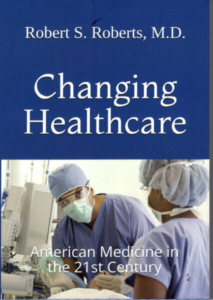In the midst of all the depressing news of late, here’s something to cheer about. Cancer mortality is on the decline.
The American Cancer Society reported this week that cancer mortality declined by a record 2.4% in 2018 and 31% since the 1991 peak. These are the latest statistics. The credit for these improvements goes to earlier diagnostics and therapies and a decline in smoking.
The Wall Street Journal editorial board says about 40% of Americans will be diagnosed with cancer in their lifetime, and the risk increases with age. Cancer is the leading cause of death for middle-aged Americans and two to three times more likely to kill someone in their 50s or 60s than even Covid-19. The incidence of some cancers like breast, liver and kidney is also increasing partly for demographic and lifestyle reasons.
For instance, breast cancer is associated with obesity and inversely related to pregnancy and breast-feeding. Increasing rates of obesity and declining fertility has resulted in breast cancer incidence growing by 0.5% annually. Liver cancer, also associated with obesity, is on the rise for the same reasons as well as excess alcohol consumption, smoking, and hepatitis.
But overall cancer death rates are falling at an accelerating pace. A 1% decline annually began in the 1990s, increased to 1.5% in the 2000s and early 2010s and further increased to 2.3% from 2016 to 2018. The latest rate of 2.4% represents the best declining rate ever.
This improvement reflects more regular screenings that catch cell mutations and tumors early, resulting in increased five-year survival rates for prostate (98%), melanoma (93%), and breast (90%) cancers and made them mostly curable.
Poorer rates of success are seen in lung cancers (21%) since they are usually caught later due to poor diagnostics, but mortality is still declining by about 5% annually from 2014 to 2018. This decline is partly due to declining numbers of people smoking, but also due to improvements in treatments like epidermal growth-factor receptor tyrosine-kinase inhibitor which is able to target non-small cell lung cancer mutations.
The Food and Drug Administration has approved new treatment therapies. The report states, “Treatment breakthroughs are also responsible for rapid reductions in mortality from hematopoietic and lymphoid malignancies in both children and adults and, more recently, certain difficult to treat cancers, such as metastatic melanoma.” CAR T-cell therapies that use genetically engineered white blood cells to attack lymphomas are also becoming more available. The FDA last year approved the break through therapy Trodelvy, which reduced tumors in 33% of patients with metastatic triple-negative breast cancer who had not responded to two prior treatments.
The same technology that produced the new Covid vaccines from BioNTech and Moderna has also been used to develop innovative oncology therapies. These companies are using mRNA technology to develop treatments for melanoma, lymphoma, and metastatic solid tumors.
It is possible we’ll see a setback for these statistics when the 2020 cancer data is available, since the Covid pandemic has resulted in missed doctor visits for cancer screening and treatments. This is one of the many costs of the lockdowns to prevent spread of the virus. Enrollment in many cancer drug trials has paused. A Journal of the American Medical Association (JAMA) study in August found that diagnoses for breast, colorectal, lung, pancreatic, gastric and esophageal cancers declined by 46.4% in March and April. This may result in later diagnosis and poorer treatment outcomes.
It is imperative that Americans get all available cancer screening when recommended by their doctors. Earlier diagnosis makes for earlier treatment and the best chance for better long-term survival and even cure.

